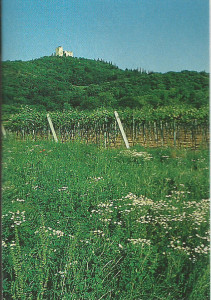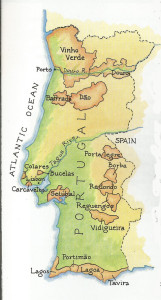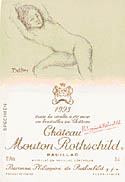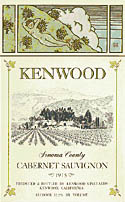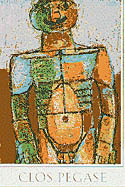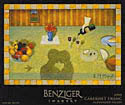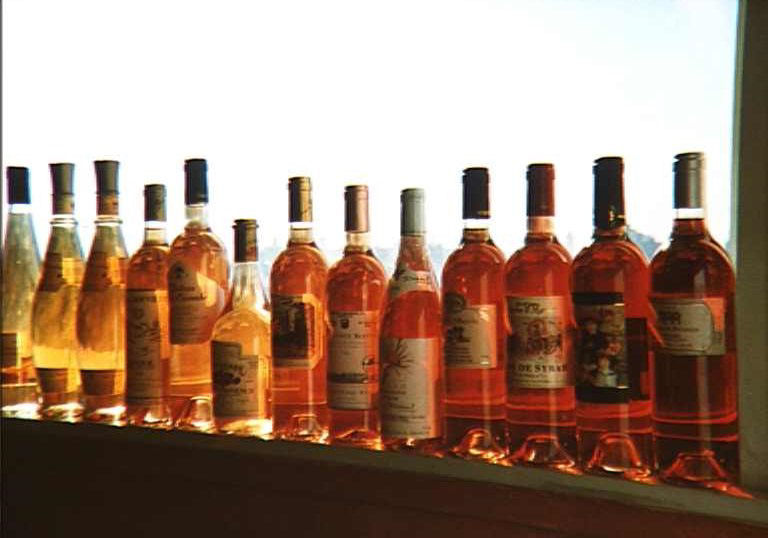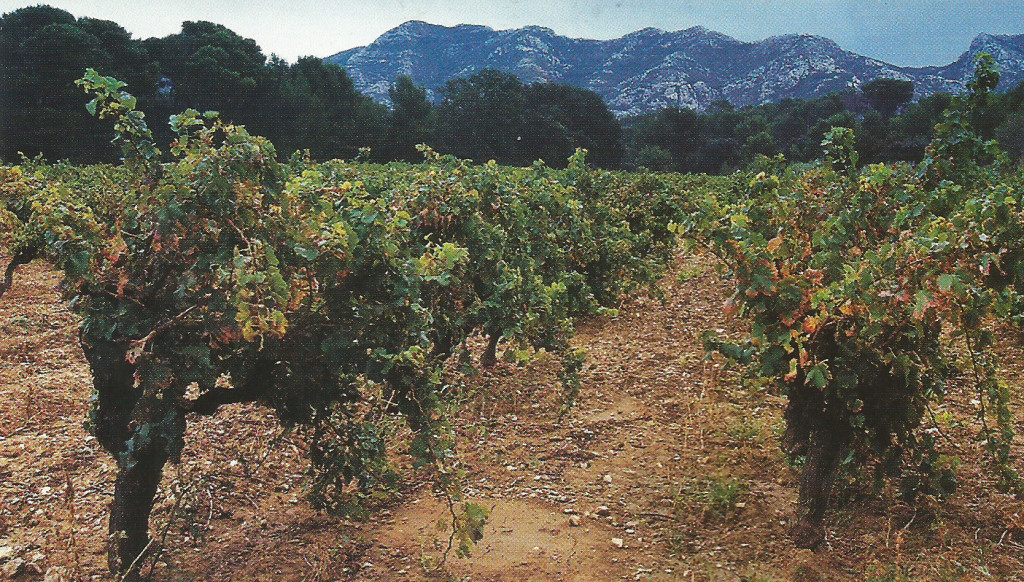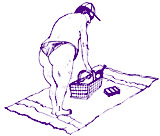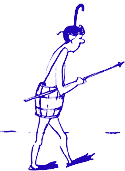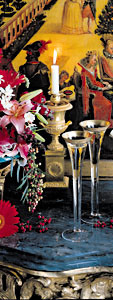Veneto: Outstanding Originals
The Magazine for Restaurant Professionals
November 1998
Page 42-43, 75-76
In April, I find myself jetting across the Atlantic to hang for a week in the Veneto – specifically, Verona. Home of Romeo, Juliet, and a couple of gentleman, Verona is also host to the annual VinItaly wine exhibition. From every corner of Italy and many parts of the rest of the world, thousands of producers flock to the fairgrounds in this ancient town to show their wares.
Local merchants and restaurateurs gear up for one of their busiest food and wine weeks of the year. Baccala, polenta, radicchio, and the occasional dish of horsemeat are served up left and right. Risotti made with local herbs or local wines fly out of kitchens to land on tables that are packed from the opening moment till the wee hours. The usual response to a request for a table is “Try next Monday” – after the fair is over, of course. Luckily for those of us who manage to find tables, the local wines are delicious, the perfect accompaniment to the irresistible local cuisine.The Whites
Winemakers in the Veneto produce a wide array of wines, from sparkling to white to pink to red to sweet. In recent years, the market for “international varietals” has sparked the industry for cheap and cheerful Chardonnay, Merlot and Cabernet. While often attractive, these are not the wines that the Veneto is justly famous for, nor are they the wines that are consumed locally. Pinot Grigio has also become a bit more visible, but most wine drinkers seem to prefer the crisper styles that come from neighboring Friuli.
There is nothing quite so refreshing as to start a meal with a glass of Prosecco. By regulation known under one of two names – Prosecco di Conegliano or Prosecco di Valdobbiadene, Prosecco is one of the most ancient white wine grapes in Italy. Produced like Champagne by the mètodo clàssico, this crisp, high-acidity grape is the perfect apertif when made in a brut or extra dry style and is a delight at the end of the meal in a demi-sec style.
The leading white wines of the Veneto are Soave, Lugana, and Bianco di Custoza. Thanks primarily to the efforts of the Bolla winery, Soave is probably Italy’s most well-known white in the United States, a staple of Italian restaurant wine lists. Based on the Garganega grape, Soave can be dry, sweet, or anywhere in between and can range from quaffable bar wine to an impressive, rich, meal accompaniment. Some top producers, such as Anselmi and PrB, are even producing superb, single vineyard “reserve” styles.
Lugana is the local Venetian dialect name for Trebbiano, a grape ubiquitous throughout Italy. Like Soave, it can be light and nondescript; in the hands of a good producer, however, Lugana can be an amazing experience. Sergio Zenato, one of the Veneto’s stars, also produces a signature, reserve Lugana that is age-worthy.
Bianco di Custoza, a wine made from a field blend of local grapes that includes both Trebbiano and Garganega as well as Pinot Bianco, Pinot Grigio, Riesling and others, is most often the local bar wine. While it is unlikely that Bianco di Custoza will ever be a world-class wine, it is virtually always refreshing and satisfying as either an apertif or first-course libation.
What is a Veneto Wine?
General Characteristics
Whites run the gamut from the dry, light, everyday aperitifs of Bianco di Custoza and sparkling Prosecco to the Trebbiano-based, peachy Lugana to medium-bodied, sometimes off-dry, apricot and herb Soave.
Reds range from the light-bodied Bardolinos with simple red fruit to age-worthy, full-bodied, high-alcohol, dried fruit-flavored Amarones that pair with game or with cheese. The versatile, food-friendly Valpolicellas cover a broad middle range.
Aging
Proseccos, most whites, Bardolinos and some light Valpolicellas are ready to drink upon release. Lugana and Soave “riserva” and richer-styled Valpolicella and Ripasso can age. The best Amarones from great vintages can age for decades; 1988-1991 vintages are drinking perfectly now. Veneto dessert wines are generally age-worthy.
Recent Vintages
1995, 1996 – Good for Bardolino and Valpolicella.
1988, 1990 and 1995 – Excellent for Amarone.
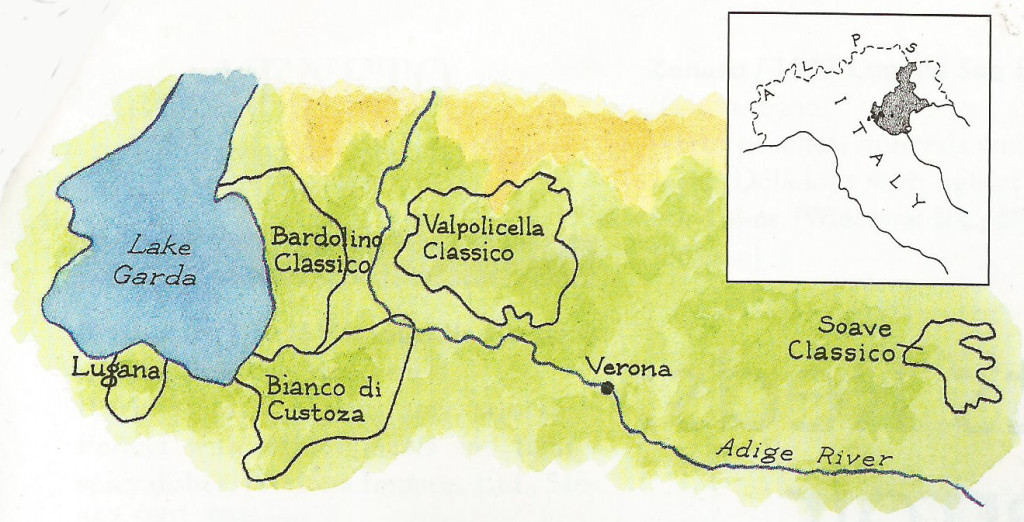 The Reds
The Reds
On the red front, Veneto boasts two major appellations – Bardolino and Valpolicella. These neighboring communities produce wines based on three grapes; Corvina, Molinara and Rondinella. Similar to Custoza, Bardolino is the local quaffing wine, but some fairly decent bottles reach our shores that make for a nice, slightly rustic match with the more “peasant” aspects of Northern Italian cuisine.
Bardolino is usually composed of less Corvina, the grape that gives color and body, and more Rondinella, a less expensive, easier to produce and more neutral tasting grape. There is a “classico” or heartland sub-appellation to Bardolino centered on one side of Lago di Garda, one of the prettiest lakes in Italy. The quality here is often better than the surrounding Bardolino area.
Valpolicella, whose production comprises a fairly large portion of the Veneto, comes in several guises. The base appellation is a dry, generally light, red table wine that can be simple or complex and goes with a wide variety of foods. It is, unfortunately, a difficult wine to define. I have had examples that were very light and simple with rather high acidity that complemented lighter fish dishes, and I have had wines from producers like Dal Forno Romano or Quintarelli that were so concentrated and rich that they easily stood up to local game dishes. Some local producers, notably Allegrini and Quintarelli, also produce single varietal wines from one or another of the local trio, most often either a richer Corvina or a lighter-style Molinara.
Within the Valpolicella region, there are three additional sub-appellations. The most well-known is Amarone Recioto della Valpolicella – more commonly known as Amarone. A distinctive style of wine, the grapes are left to air-dry for months, often until late February or early March. In addition, many producers leave the grapes on the vine to develop botrytis. The resulting raisinated grapes are then crushed and fermented dry to result in a concentrated, high-alcohol wine that, because of limited tannins in the particular varietals, can be drunk young or left to age.
Amarone is now made by a large percentage of Valpolicella producers, and experiments with various vinification techniques, barrel fermenting and barrique aging are adding to the range of styles and quality of this wine. Top producers include Quintarelli, Dal Forno Romano and Allegrini. Some of their wines need at least a decade to mature.
One of the interesting by-products of experimentation is the Valpolicella Ripasso. Not an official appellation, it is the result of producers who wanted to add body to their basic Valpolicellas. A small portion of either dried grapes or the remaining pomace from Amarone production is added to the Valpolicella fermentation tanks to boost concentration, flavor and alcohol levels. Most are marketed under the Valpolicella Superiore appellation, which requires an additional degree of alcohol, but many are now being called Ripasso, resulting in a new category for wine drinkers to explore. Boscaini and Allegrini produce delicious examples.
Sweet Wines
Veneto’s sweet wines include Recioto della Valpolicella. Generally made from botrytized grapes, the “recioto” refers to picking the grapes from the “ears” of the grape bunch, the ones that have the most sun exposure and are richest in sugars and flavors. Produced much like Amarone, the fermentation is stopped, either naturally or artificially, to produce a rich, concentrated dessert wine that is Italy’s answer to port.
There are also some delicious Recioto di Soave wines produced in the Soave region; all late harvested, and some botrytized. With honeyed, ripe, stone fruit character, these make wonderful accompaniments to fruit- and cheese-based desserts. Other white dessert wines are produced from a variety of grapes, including the interesting, Vespaiolo-based wines from Fausto Maculan.
As anywhere, there are good and bad wines that come from the Veneto. More and more, however, the wines are consistently good, and top-quality producers are making wines that rival the best from other regions of the world. Take some time and taste through what’s available to you locally, and next year, let’s hook up for a bottle in downtown Verona.
Reviewer’s Choice
Nino Franco / N.V. Prosecco di Valdobbiadene Rustico
100% Prosecco
Dry, notes of cooked pears and cardamom. With sushi, it was the hit of the pack.
Cavlchina / 1996 Bianco di Custoza Amedeo
Cortese, Garganega, Trebbiano
Rich, ripe pears, light yeastiness. Impressive for the gnre and an incredible choice with veal and pork.
Brigaldara / 1991 Amarone Classico
Corvina, Rondinella and Molinara
Dried plums and cherries, spice, chocolate. Still a little young and tannic.
Maculan / 1994 Acininobili
85% Vespaiola, 10% Tocai, 5% Garganega
Honey, spice, dried pears and apricots. Cries out for blue cheese, or just sip it on its own.
Brigaldara / 1996 Valpolicella Classico
Corvina, Corvinone, Sangiovese
Blackberries and spice, great structure. Perfect with lighter meats and lightly spicy dishes.
Boscaini / 1995 Bardolino Classico Superiore Le Canne
Corvina, Rondinella, Molinara
Red currants and spice. An interesting wine, good with lighter fried foods.
Cavalchina / 1997 Bianco di Custoza
Cortese, Garganega, Trebbiano
Pears, a touch of honeydew melon and light spice. Wonderful with poultry and veal.
Cavalchina / 1996 Bardolino Superiore Santa Lucia
Corvina, Corvinone, Rondinella
Plums, cherries and spice. Delicious on its own or with lighter meals.
Nino Franco / N.V. Prosecco di Valdobbiadene Rustico
100% Prosecco
Dry, notes of cooked pears and cardamom. With sushi, it was the hit of the pack.
Montresor / 1997 Bianco di Custoza
(mostly from Garganega, with Tocai, Chardonnay, Bianco Fernanda and Trebbianello)
Cream, spice and fresh peaches. Delicious as an aperitif or with poultry and light pasta dishes.
Villa Rizzardi / 1995 Valpolicella Classico Superiore Poiega
Corvina, Rondinella and Molinara
Sweet cherries, spice and a touch of chocolate. Delicious on its own and a great match with lamb.
Zenato / 1997 Lugana San Benedetto
100% Trebbiano
White peaches, minerals and a touch of yeast. Delicious with lighter pastas and fish dishes.
Zonin / 1996 Soave Classico
95% Garganega, 5% Trebbiano
Light earth, yeasty, peaches and apricots. An excellent aperitif wine, especially for the price.
Allegrini / 1995 Valpolicella Classico Superiore La Grola
70% Corvina, 20% Rondinella, 5% Molinara, 5% Sangiovese
Smooth, creamy, spice and dark fruits. A Valpolicella fit for red meat.
Anselmi / 1996 Soave Classico Superiore Capitel Croce
100% Garganega
Tropical fruit, coconut, vanilla and light spice notes. Delicious by itself or with lighter meats.
Bisol / N.V. Prosecco di Valdobbiadene Crede
100% Prosecco
Bone-dry, minerally, grapefruit pith. Definitely an aperitif-style sparkler and great with a plate of oysters on the half-shell.
Boscaini / 1993 Valpolicella (Ripasso) Santo Stefano de le Cane
Corvina, Rondinella, Molinara
Rich, full-bodied, dark fruits, chocolate and spice. Delicious with lamb and game.
Cavalchina / 1996 Bianco di Custoza Amedeo
Cortese, Garganega, Trebbiano
Rich, ripe pears, light yeastiness. Impressive for the genre and an incredible choice with veal and pork.
Prà / 1996 Soave Classico Superiore Monte Grande
90% Garganega, 10% Pinot Chardonnay
Apricots and cream, minerally, very elegant. A perfect partner with poultry and fish.
Vincenzo Toffoli / N.V. Prosecco di Conegliano Extra Dry
100% Prosecco
Dry, white peaches, with notes of yeast and toast. Delicious with fish and lighter poultry dishes.
Allegrini / 1994 Recioto Classico della Valpolicella
Corvina, Rondinella, Molinara
Prunes and dried cherries, with spice and a touch of chocolate. Drink on its own or with a dessert, such as a spice cake.
Bertani / 1998 Amarone Classico Superiore
Corvina, Rondinella, Molinara
Dried plums and cherries, spice and earth. Always a class act. Delicious with game.
Bertani / 1985 Recioto Valpolicella Valpantena
Corvina, Rondinella, Molinara
Cherry liqueur filled dark chocolate candies, with a spritz, in a bottle. The perfect wine with a chocolate dessert.
Brigaldara / 1991 Amarone Classico
Corvina, Rondinella, Molinara
Dried plums and cherries, spice, chocolate. Still a little young and tannic.
Dal Forno Romano / 1988 Recioto della Valpolicella
Corvina, Rondinella, Molinara
Peppery, smooth, with dark fruit flavors of prunes and cherries. Drink instead of Port for a great finish to a meal.
Maculan / 1994 Acininobili
85% Vespaiolo, 10% Tocai, 5% Garganega
Honey, spice, dried pears and apricots. Cries out for blue cheese or just sip it on its own.
Masi / 1994 Ripasso Campofiorin
60% Corvina, 25% Rondinella, 10% Molinara
Tobacco, plums and a touch of toffee. Perfect with lamb or game.
G. Rizzardi / 1993 Amarone Classico
Corvina, Rondinella and Molinara
Dried cherries and strawberries, spice and alcohol. A perfect partner with lamb.
Villalta / 1993 Amarone I Communali
60% Corvina, 30% Rondineall, 5% Molinara, 5% Rossignola and other
Black cherry, blueberry and raisins, with an earthy element. Very luscious and soft black cherry flavors; long finish that is jammy, but clean. After dinner with veined cheeses.
Santé is a glossy format trade magazine for restaurant wine buyers and educators. I wrote as a freelancer for them on and off from the first issue in November 1996 until November 2002 when they decided to stop using freelance writers.
